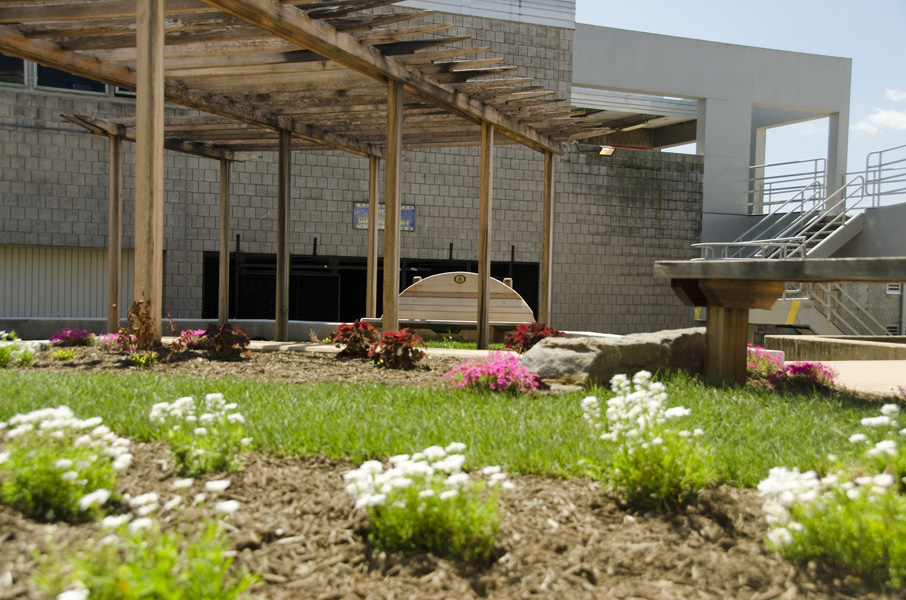Here at the TKF Foundation, we are extremely proud to have partnered in the creation of over 130 Sacred Places in the past 20+ years. Our firm belief is that everybody needs a Walden Pond in their back yard, a place where people can be in nature and reconnect to themselves, to the land, and to each other, and we believe these spaces give that to the community.
With that in mind, here on our blog, we would like to occasionally feature some of these locations that we’ve had a hand in creating — both to let you know a bit more about our organization, and also about the benefits of these spaces. Today, we’re featuring our prison garden at the Maryland Correctional Institution.
When creating this space, our challenge was to cultivate an atmosphere of reflection among an incarcerated population, as well as introduce nature as a change agent to address one of society’s most intractable challenges: inmate rehabilitation.
Some background: Prison gardens provide much needed contemplative space offering inmates an opportunity to reconnect with nature which can be an important catalyst to self-improvement. Prison gardens reduce violence, improve mental health, teach horticultural skills and reduce recidivism rates.
We worked with several partners to create a space called The Garden of Reflection. It enables inmates to make amends for their crimes, to regain their dignity and prepare to reenter society.
The space created includes a meditative garden space that was envisioned and created by the inmates. It is bordered by a mini-arboretum of saplings that is tended by the inmates. All aspects combine for a powerful metaphoric image: the saplings will be transplanted into the communities outside the prison, much as one day the inmates will leave as they take the next step in their ongoing process of reinvention and growth. Recently, over 40 native redbuds were replanted in communities around the City of Baltimore.
Collaboration amongst a diverse group of inmates and volunteer professionals added deeper meaning to the creative process and ultimate outcome of the space. Several prison vocational groups worked together to enrich and document the garden project. Inmates working on their Master Gardener certification grow and tend the plantings. Inmates in the Prison’s Art Program created the poignant and compelling public artwork and poetry that frame the space. Inmates involved in a pilot video production program developed their technical skills while documenting the project.
In each of our spaces, we include a journal where we encourage visitors to write their thoughts and feelings while in the Sacred Place. One inmate wrote this:
“This environment was built to maintain the mentalities of negativity. It can also be said that in every negative circumstance there must exist a degree of positivity. This garden is a vivid example of revitalization and an exception to the expectations of jail life realities. This small serene space allows us to mentally balance out our morals and principals. Life is not at fault for dealing us the hands that we chose to play and lost. It’s us who have to make positive decisions and choices in life to win.”
For more on our locations, click here.


